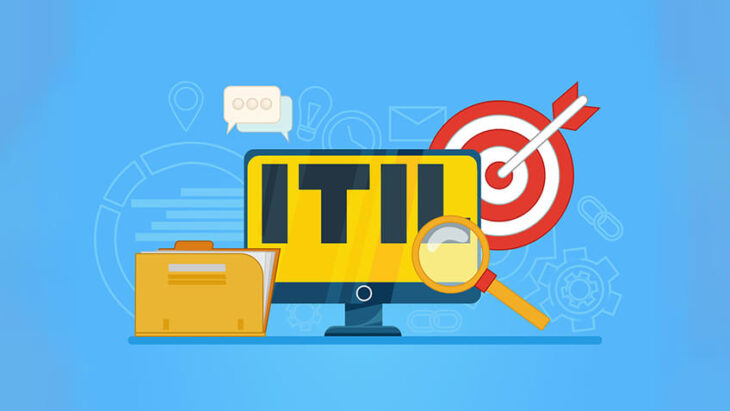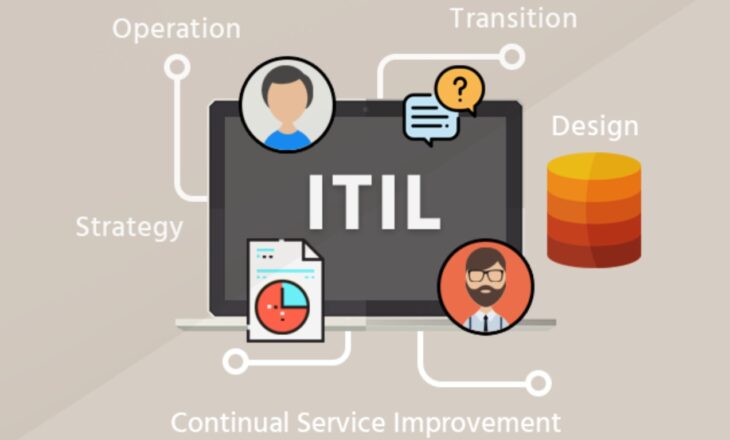Every one of you is aware that in today’s era, business and technology have been linked inextricably. Moreover, every company is looking forward to being perfect in terms of objectives and IT capabilities as each company wants to give its best and rank higher in their competitors’ list.
Now, to rank higher among others does not come with a blank canvas, it needs proper management in IT and its practice. Without ITSM or IT service management, it would be quite hard to deal with all of the IT services. Moreover, ITIL or IT infrastructure library is the set of ITSM practice which is utilized by a high-profile organization such as NASA, HSBC, and IBM.
In this article, we have discussed the 7 effective steps of the decision-making process in ITIL. But before we dig into this 7 steps process, Click here to have brief outlook on what ITIL is about.
About ITIL

Source: Simplilearn
ITIL is nothing but a set of ITSM practices. It is known that ITIL was originally designed for standardizing the procedure of better IT management so that with the help of ITIL, common pitfalls could be avoided. By avoiding common mistakes, the company can provide high-quality services to its customers.
Furthermore, ITIL is not just better in IT service strategies but also in continuous improvement. It enables the practitioners to adapt to the IT service infrastructure and also prepares for further changes. Hence, ITIL is the best practice for creating as well as improving the IT management services.
As ITIL is versatile, it is not based upon a particular business model. More likely, it is based on the overall as well as the collective experience of IT professionals. Hence, this was all about ITIL. Now, let’s have detailed information about 7 effective steps.
About- 7 effective steps of the decision-making process for ITIL

Source: Comodo One
Talking about the most important component of ITIL that is ITIL guiding principles. In this ITIL guiding principle, there’s detailed information regarding the universal as well as enduring organization guidance which is regardless of whatever changes in its goals, type of work, strategies, as well as management structure. Moreover, it is suitable for all of the circumstances.
In these 7 guiding principles, they have involved all of the core message of ITIL as well as service management, so that you can provide the organization the successful actions and make better decisions at all levels as well as of all types.
#1. Do focus on value

Source: KLIM Technologies
In this step, everything that the organization does should link back either directly or indirectly to the value of customers, stakeholders, and itself as well. To get yourself focused on the value, know-how the customers and stakeholders are been served.
Moreover, the value according to the customer’s perspective is the most essential step. Get yourself acknowledged about the customer’s experience (CX) as well as the user’s experience (UX) with the service and organization. By this, you would get to know about what the customers think about the organization’s service as well as the product.
Have a look at following steps to achieve success in this procedure:
- Focus on the value in each step of any improvement.
- Get to know about how and when the customers use particular services.
- Encourage your staff to focus on value.
- Focusing on value while normal operative activity, as well as improvement initiatives, is very important.
#2. Look at your mistake and get a start by improving them

Source: Wrike
If you are not getting results as per your efforts, it means that you are lacking somewhere. And it does not mean that you have to start all over again. In such a scenario, you just have to make a list of where you are lacking at and by improving that mistakes, you would automatically get a boost in your work.
By building a completely new process, you would waste your time as well as efforts. To avoid common biases and risks in decision-making, have a look at the following steps:
- Improvements should be parallel to objectives as much as possible, think about the particular outcomes regarding customers’ desires at the starting point.
- You must have the ability to apply risk management skills.
- If you find any hope of particular success, then determine its replicated or expanded idea and put it in the current state.
- Lookout that if there’s anything that can be re-used in the current state.
#3. Get through the step-by-step procedure

Source: medium
You must have the capability to resist the temptation to do everything at once. It is known that smart work is also important similarly to hard work. Proceed your work in a manageable period, and by doing this your work can be executed as well as completed until a particular deadline without any pitfalls.
Now, when the work is done, wait for its feedback. The feedbacks would analyze the improvement, risks as well as issues. Moreover, if you want to finish your work quickly then be focused as possible as you can.
#4. Get your work collaborated as well as promoted visibility

Source: itpeernetwork
Get the proper team that knows how to work together as working together would lead to actual accomplishment which involves, proper information, trust as well as understanding. In this procedure, the first and very important step is identifying and managing the group of stakeholders.
To achieve success, the most important group of stakeholders is of customers and then the group of developers, suppliers, relationship managers, internal as well as external suppliers. To address the stakeholder for their need at the right time is very important.
Moreover, you should keep eye on visibility of the stakeholder, as if there’s any misguidance in this step then it would directly affect the decision-making process. Make your decisions on visible data, and communication is the best key to elaborate as well as to encourage the team.
#5. Think and work in the team, together

Source: jebgroup
Look at every organization’s service, practice, process, department as well as suppliers. No one can establish their work in a proper term without the help of each other. It’s better to handle various activities with entire teamwork rather than in separate ways.
To work as the team, all should know about how they recognize the complexity of systems, how to look for patterns when in need, and automation is much easier when the work is done holistically.
#6. Simple and practical work is known as smart work

Source: proofhub
More the steps, more critical would be the process. Try to input minimal steps to get through the process easily. There’s no need to add various outcomes in the procedure as it would over-complicate the procedure.
Take minimal steps but parallel to the objectives, this is called practical work. Before taking any of the steps, think about its outcomes, and recognize that is this step required or not. Design, manage, and operate your work wisely and corresponding to its objectives.
#7. Automation is must

Source: dnaindia
Automation in decision-making terms can be referred to be as the usage of technology for performing a series of steps in the right way. And this includes limited human intervention or not at all. Moreover, it is standardized as well as streamline procedures to make the decisions automatically.
Hence, the above was 7 effective steps of decision-making process in ITIL.
